You’ll find the term triple sensor, 3-sensor, or tri-sensor technology in the specifications of many digital pianos. But is a triple-sensor digital piano really better, or can you safely ignore this feature? A brief look at digital piano technology.
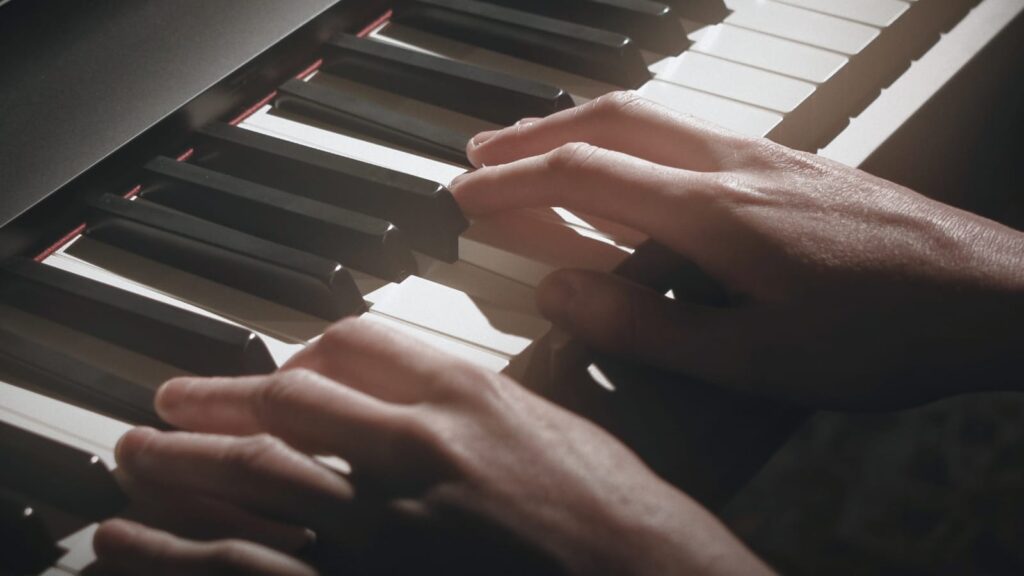
You’ll find the term triple sensor, 3-sensor, or tri-sensor technology in the specifications of many digital pianos. But is a triple-sensor digital piano really better, or can you safely ignore this feature? A brief look at digital piano technology.
The term tri-sensor or triple sensor refers to a technical detail of the hammer action keyboard. While you’ll always hear about this feature in the context of let-off simulation, this does not refer to the same feature.
A digital piano keyboard with three sensors allows for a more precise touch when playing pianissimo and when repeating notes quickly.
On a digital piano, a hammer mechanism simulates the feel of a real piano. However, in addition to the hammer mechanism, the keyboard of a digital piano is also equipped with sensors that transmit the movement of the keys as digital information to the sound generation. How does this work?
This mechanical implementation differs from manufacturer to manufacturer, and not every manufacturer maps the keyboard mechanics as transparently as Kawai (see fig.).
For reasons of synchronicity, it is never the key itself that comes into contact with the sensors, but always the movable hammer element. The hammer strike itself triggers the sound, and electronics in the circuit board and the plastic elements make further measurements possible.
While initially difficult to grasp, playing the piano involves much more than just playing loudly or softly with varying degrees of force.
Velocity sensitivity allows for a wide range of playing techniques and articulations. This is what makes the piano such a powerful instrument with a wide range of expressive possibilities and subtle nuances of sound.
Dual-sensor keyboards are common on less expensive entry-level models, and in principle, this is sufficient. After all, you can play dynamically from pianissimo to fortissimo, which would be the basic building blocks of a pianoforte.
However, a digital piano with three sensors also allows you to control the tones via the key travel. This is not only better from a purely technical point of view, but it also comes closer to the playing feel of the acoustic model.
Advanced players will feel and use the advantage because the triple-sensor technology allows a finer dosage of piano touch when playing pianissimo. The repetition characteristics of a keyboard also benefit from a triple-sensor system.
Entry-level digital pianos under 1,000 Euros are usually equipped with dual-sensor keyboards. However, there are exceptions, such as the Kawai KDP-120 or the Thomann DP-51 and DP-140B U digital pianos.

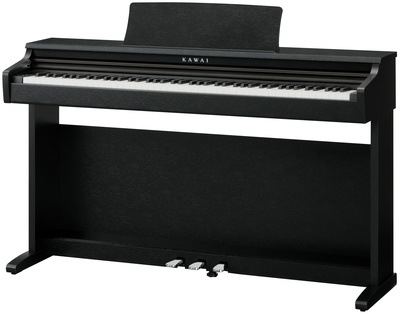

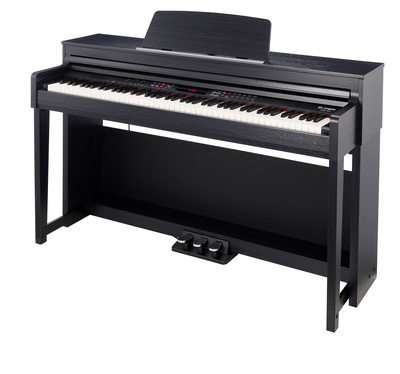

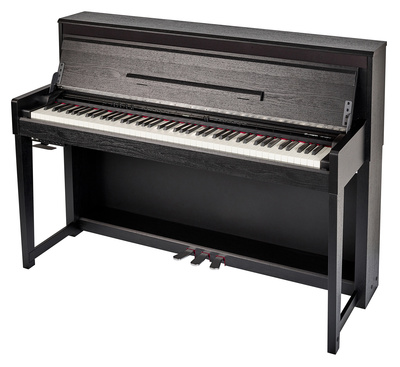
Since a dual-sensor system cannot sense the key travel, there is a certain gray area in the keystroke: It lacks precision. Beginners will not be bothered or even notice this at first, but advanced players can feel the difference: It is more comfortable for them to play on a triple-sensor keyboard and a nuanced pianissimo is easier to achieve.
The difference between a dual-sensor and a triple-sensor keyboard is shown in a section of our comparison test between the Yamaha YDP-145 and the Kawai KDP-120. The latter has a keyboard with three sensors, while the Yamaha YDP-145 has only two.
A let-off simulation is a feature for advanced players. That’s why this feature is only available on mid-range models starting at 1,200 Euros. The so-called let-off simulation (also known as Escapement) allows you to control a slightly noticeable release point in the key travel. It goes without saying: Without a triple sensor, this playing technique would not be possible.
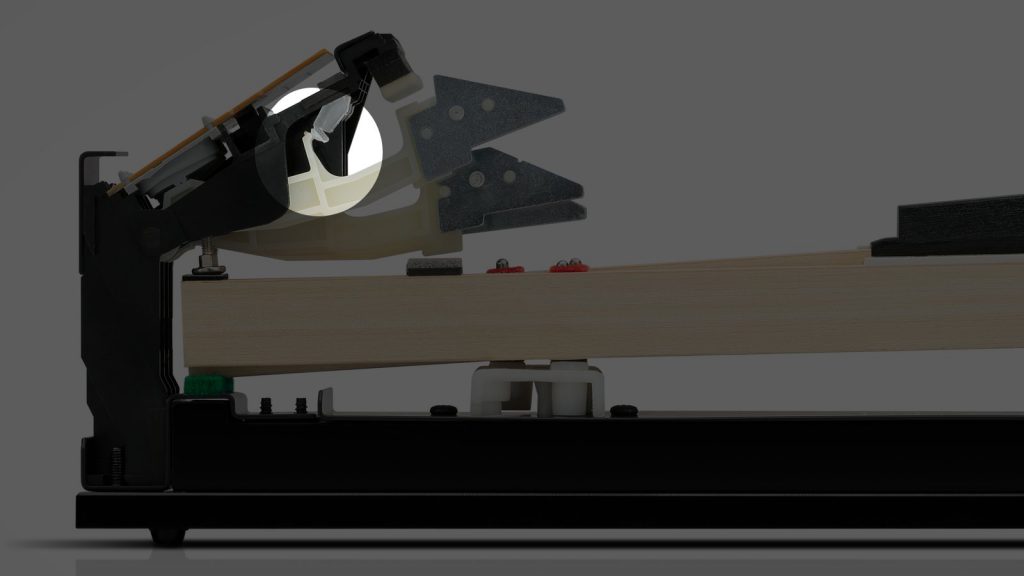
Whether you are looking at a hybrid digital piano or an acoustic hybrid piano, the sensor technology used in these keyboards is significantly more sophisticated than what you find in keyboards of mid-range digital pianos. The playing experience reflects this accordingly. Acoustic hybrid pianos use non-contact systems that do not mechanically affect the keystroke.

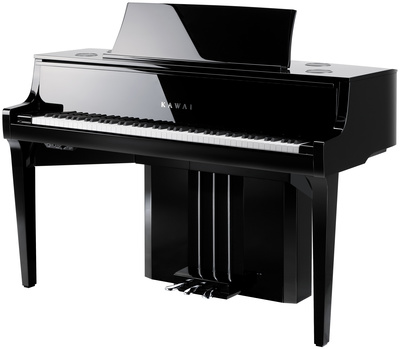

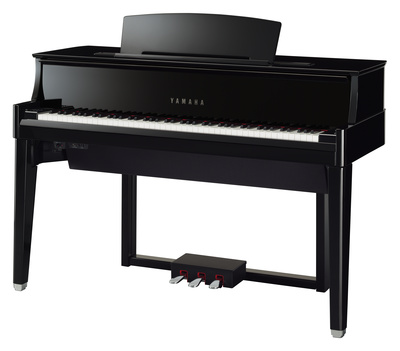

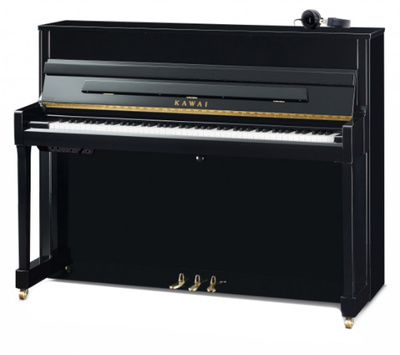


*Affiliate link. These “advertising links” help us finance our website. If you buy a product through such a link, we receive a small commission – at no extra cost to you. The PIANOO.com team says thank you for your support!
Everyone knows the bell-like, cool FM piano sound, often enhanced with effects and found in nearly every digital piano. This sound was modeled after the legendary Fender Rhodes but has a much brighter, more artificial ...
You don't have to be a professional pianist to play the piano chords for the song Someone Like You. And yet it is one of Adele's most successful songs. In that sense, Someone Like You ...
In our "PIANOO Giveaway", Modartt is offering three full user licenses for Pianoteq. This physically modeled software instrument runs on MacOS, iOS, Windows, and Linux. You have the chance to win a license for one ...
70 years of Thomann - 70 years of passion for music. Under the title Behind the Passion, the music store tells the story of Thomann and offers a closer and more personal look behind the ...
Kawai's ES Series portable pianos are popular with both beginners and advanced players, offering high-quality features in the $400–$1,200 price range. Key improvements over previous ES models include a significantly lighter weight, bass reflex speakers, ...
Why does the world need a Piano Day? "There are many reasons," says Nils Frahm, "but above all, it can't hurt to celebrate the piano and everything related to it: Artists, composers as well as ...
Since not every piano VST is available as a standalone version, you need host software. If you don't want to buy an expensive digital audio workstation, you can use a free DAW instead. And you ...
Save the Date! Superbooth 2025 will take place from May 8-10. This year, too, you can look forward to the performance and workshop program, which invites you to the usual location at the Freizeit- und ...
If you want to record authentic piano tracks in a DAW, you need a good MIDI keyboard. Of course, you can also connect a digital piano or stage piano to your PC instead. Depending on ...
The term "felt piano" is closely associated with the popularity of the neoclassical genre, where this very soft sound has almost become a trademark. The sound and its poetic quality are actually a by-product of ...
Playing piano with the sustain pedal - it's the easiest thing in the world! Full-throttle on the right pedal and hammer on the keys - it's great fun and sounds excellent. However, getting from one ...
Playing the piano using a piano VST - a clever and seemingly inexpensive solution. However, considering that you'll need a lot more than just the software, it's not that much cheaper than a digital piano, ...
You are currently viewing a placeholder content from Facebook. To access the actual content, click the button below. Please note that doing so will share data with third-party providers.
More InformationYou are currently viewing a placeholder content from Instagram. To access the actual content, click the button below. Please note that doing so will share data with third-party providers.
More InformationYou are currently viewing a placeholder content from X. To access the actual content, click the button below. Please note that doing so will share data with third-party providers.
More Information